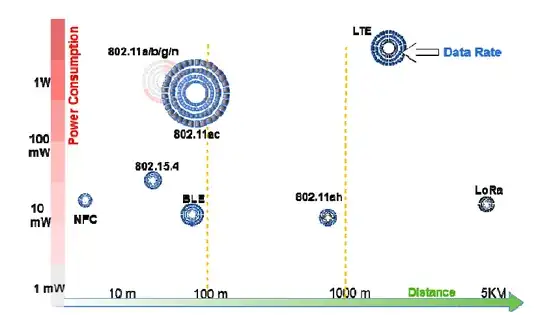In theory, IEEE 802.15.4 (ZigBee, Thread etc.) can achieve a much larger range than Bluetooth Low Energy (conventional, not coded PHY) due to its usually higher sensitivity (see for example here or here).
I have noticed the same in my own experiments, too, but do you know about a reputable source where the coverage of BLE and IEEE 802.15.4 is compared under realistic conditions?
